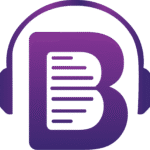In our pursuit of knowledge, we often focus solely on what happens within the confines of a classroom or library. However, a growing body of evidence suggests that engaging our bodies, particularly through activities like running, while simultaneously engaging our minds through listening, can create a powerful synergy that significantly enhances learning and memory. This isn’t just anecdotal; scientific research is increasingly illuminating the intricate connections between physical activity, brain health, and cognitive function.
The Brain-Boosting Benefits of Physical Activity
The idea that a healthy body fosters a healthy mind is ancient wisdom, but modern science is providing concrete proof. Universities, long bastions of intellectual development, have historically championed extensive sports programs and physical clubs, intuitively understanding the link between physical well-being and academic success. This intuition is now firmly supported by research.
Exercise, especially aerobic activities like running, has profound effects on the brain:
- Increased Blood Flow and Oxygenation: Physical activity elevates heart rate, increasing blood flow to the brain. This surge of blood delivers more oxygen and nutrients, essential for optimal brain function. Studies have shown that aerobic exercise can improve cerebral blood flow, which is crucial for cognitive performance(Source).
- Neurogenesis and Brain Structure: Regular exercise promotes neurogenesis – the growth of new brain cells – particularly in the hippocampus, a brain region critical for learning and memory. It also leads to improvements in brain structure, such as increased gray matter volume.These findings are supported by a systematic review and meta-analysis of randomized controlled trials.
- Neurotransmitter Release: Exercise stimulates the release of various neurotransmitters, including dopamine, serotonin, and norepinephrine, which play vital roles in mood, focus, attention, and learning. The often-cited “runner’s high” is linked to the release of endorphins, which can improve mood and reduce stress, creating a more receptive state for learning (source).
- Improved Cognitive Functions: Beyond memory, physical activity has been shown to enhance executive functions like planning, problem-solving, and attention. (source).
The Power Duo: Running and Listening
If exercise alone is so beneficial, what happens when we combine it with auditory learning? The potential for enhanced learning is significant:
- Optimal Brain State for Absorption: As discussed, physical activity primes the brain by increasing blood flow and activating neural networks. When you listen to an audiobook, a podcast, or a lecture while running, your brain is in an activated state, potentially making it more receptive to absorbing and encoding new information.
- Reduced Distractions: For many, running outdoors or on a treadmill provides a unique environment with fewer visual or social distractions compared to a static study setting. This focused environment, combined with the rhythmic nature of running, can allow for deeper concentration on the auditory input.
- Repetition and Consolidation: The repeated exposure to auditory material during multiple runs can aid in memory consolidation. The brain uses sleep and repetition to solidify new memories; integrating audio learning into a regular exercise routine provides consistent, active repetition.
- Embodied Cognition: While not directly studied in the specific context of “running and listening,” the broader concept of embodied cognition suggests that our physical experiences influence our cognitive processes. The physical effort and sensory input during a run might subtly influence how we process and remember auditory information, creating a richer, more context-dependent memory. This idea is supported by research indicating that physical actions can enhance memory performance. For instance, a study published in Memory & Cognition found that enacting phrases (physically performing actions) during learning improved recall compared to just reading them (source). Additionally, a review in the Psychonomic Bulletin & Review discusses how sensorimotor processes are integral to memory, suggesting that bodily movements during encoding can influence retrieval (source).
Practical Applications and Getting Started
Incorporating running and listening into your learning strategy is straightforward:
- Choose Your Audio: Select audiobooks, educational podcasts, recorded lectures, or language learning programs that align with your learning goals. Or use an app like Briefio and upload summaries of scientific texts you want to learn about.
- Find Your Rhythm: Whether it’s a brisk walk, a jog, or a long-distance run, find a pace that allows you to focus on the audio without being overly breathless.
- Consistency is Key: Regularity in both exercise and audio consumption will yield the best results. Make it a habit.
- Reflect and Reinforce: After your run, take a few minutes to mentally review what you’ve heard or even briefly discuss it with someone. This active recall helps solidify the information.
The integration of physical activity and auditory learning offers a compelling pathway to enhance cognitive abilities and deepen knowledge acquisition. So, the next time you’re lacing up your running shoes, consider plugging in your headphones not just for music, but for a powerful boost to your brain power.





